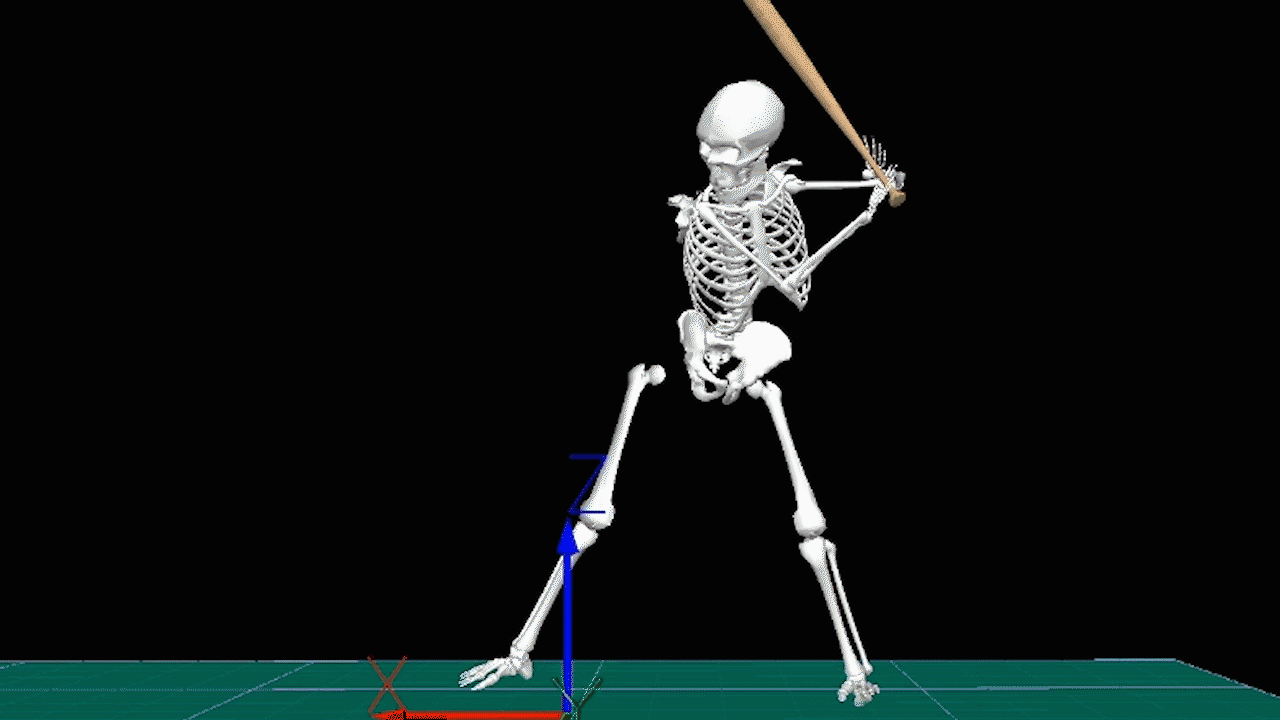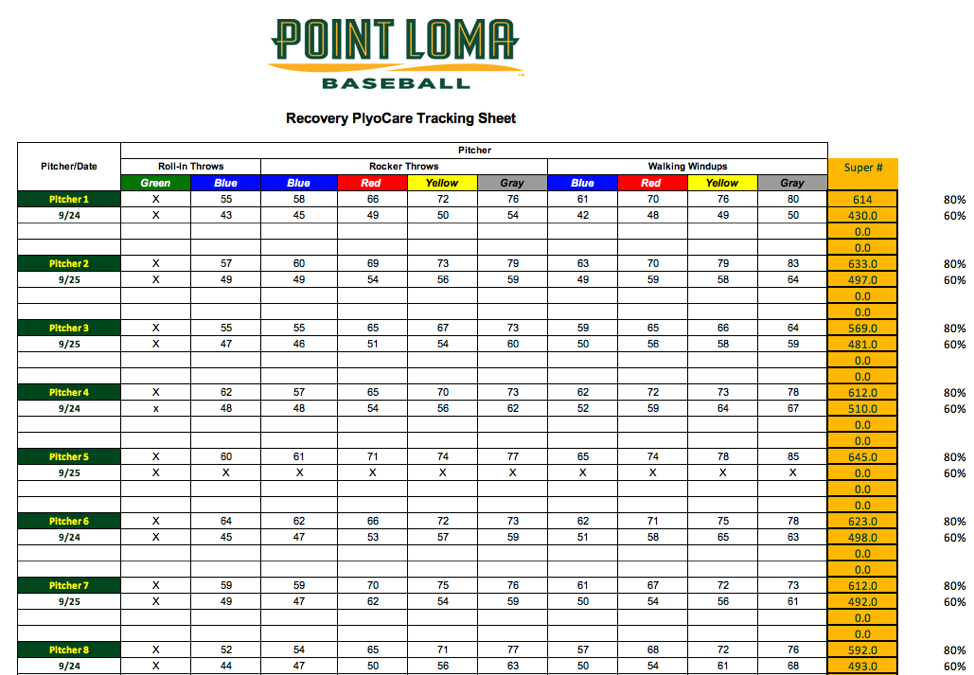Coaches Series: Pairing Hitting with Pitching

This post from our Coaches Series was written by Justin James, Head Coach at Point Loma Nazarene University. He previously served as Assistant Coach at University of California, San Diego.
In prior blog posts, I covered implementing the Driveline Pitching Program for first-time coaches: 30 days Before a Season Starts, Year-Round Programming, and a Review of First Year Implementation. In this post, I cover implementation from a head coach’s perspective who is considering his development approach from the offense and pitching side.
I have used the Driveline model for several years with my pitching staff, with excellent returns and development. When hired as a head coach this summer, I knew I wanted the same approach from the offensive end that I took with the pitching staff. Keeping track of swings, testing, overall intent, and structure are what I believed to be the best approaches. Overload and underload training works, and I’ve seen it help my previous players.

Foundations of Hitting
30 modules teaching you everything we know about hitting and hitting mechanics.
Surveying a Team in the Fall: Pitching
Every year, it’s vitally important that coaches look back at what players did over the summer and plan out where they want to be in-season.
The pitching staff I took over was on an extended-rest period. This meant two things: the new members of the staff would have no experience with Driveline throwing protocols and demands, and the returners would have to on-ramp entirely again because of the very limited throwing over the summer.
Because of this, the first month of individuals was entirely dedicated to education of the protocols: light pen work and breaking down their movement patterns. On top of this, we included a four-day lifting split that was executed by our S&C coach Erik Pederson.
From the pitching side, I decided not to test anything in their first fall except their Plyo Ball ® drills in order to establish a baseline and help them understand what their perceived exertion scale looks and feels like. Like mentioned in previous posts, it’s hard to know what your recovery exertion should be when you never record their recovery days and the same can be said on their max intent days.
Recording this information allows for better max intent, recovery, and blend days. You can see we had some tweaks to their specific days to account for over working and possibly under working on certain days. This was the plan that I felt best prepared our pitchers for the season.

Surveying a Team in the Fall: Hitting
We also decided that our hitting training needed to be re-hauled. We knew that we wanted to focus on intent, strength, and re-organization of mechanics and decided to do that through the Driveline Axe bat Underload/Overload program. Literally the first thing I did when hired as the head coach at Point Loma was order the Driveline Team Axe Bat Hitting System. It was the best purchase of the fall, without question. It gave variety, direction, and structure to our training on the offensive end. My assistant Jeff Calhoon was in charge of running the program and mastering the techniques to make it fit our needs and time constraints. He was willing to implement, continue his knowledge, and adjust to our players’ needs, and this paid dividends.

Become the Hitter You Want To Be
Train at Driveline
On the offensive end, we tested them over six different weeks. This included regular tee, rocker tee, and walk-in tee drills. Each drill was executed with barrel-loaded, hand-loaded, and underload bats. We tested both pull side and opposite field numbers to further connect the “why” to the drills and what we were trying to teach in our approach. The overall team’s improvement over the fall was obvious. We also kept note on what days we lifted or conditioned because this would skew our numbers; however, working on strength and pushing ourselves is the whole point of the fall, so we kept all numbers as is but documented those days for our own training knowledge (future tweaks to how/when we train/test). Here is our fall team numbers and a few examples of players who stood out.

Each Player Was Also Given a Profile for Motivation and Tracking:

As you can see, major improvements occurred in some individuals and gave our team and ourselves a road map to development.
Practice Plan
One of the main deterrents to this type of training is a lack of baseline knowledge, cost, and the overall time it takes to implement in a daily or weekly practice schedule. Step one in my opinion is prioritizing what’s most important to you and your program. Our approach is to make our best players better through challenging demands and drills while also keeping track of their habits and cage work. More importantly is bringing the middle-tier players up to become more impactful when they are given the opportunity. This might be younger guys that project playing a year or two out or guys that simply need to learn a different way to be aggressive and get stronger.
With this in mind, it’s actually became easier to fit everything in. One of the best strategies was to eliminate wasted time from the pitching staff (shagging or sitting around). We simply started off the day hitting (BP and other offensive drills), and typically most programs finish with BP. The reason this worked best was it allowed our pitching staff to have ample time to warm up and get in ample long-toss time. Most days, this got them ready to go in between BP groups 3-4, and if done early, it allowed for mental work or help shag the last bit of BP.
The timing also helped by going straight into team defense with limited cool down. It gave my hitting coach, Jeff Calhoon, plenty of time to get what he needed done and same on the pitching end. During this approach, it also allowed for testing to be one of the offensive rotations to keep accountability up, instead of a wasted shag group or sloppy cage rotation. This also could be done easily during individual work to maximize gains in the limited time allowed per NCAA rules. Another aspect that goes unmentioned is it allows for easier “offseason” training plans (such as Christmas, Thanksgiving, or summer) that I have found very beneficial.
Finally, it pays off when both sides are training the same way. Hitters and pitchers both try to compete within their positions for gains against other teammates and themselves regularly. After my first fall as a HC, I, without question, highly recommend adding the DL/Axe training on top of the pitching DL protocols.
Train at Driveline
Interested in training with us? Both in-gym and remote options are available!
- Athlete Questionnaire: Fill out with this link
- Email: [email protected]
- Phone: 425-523-4030
Comment section